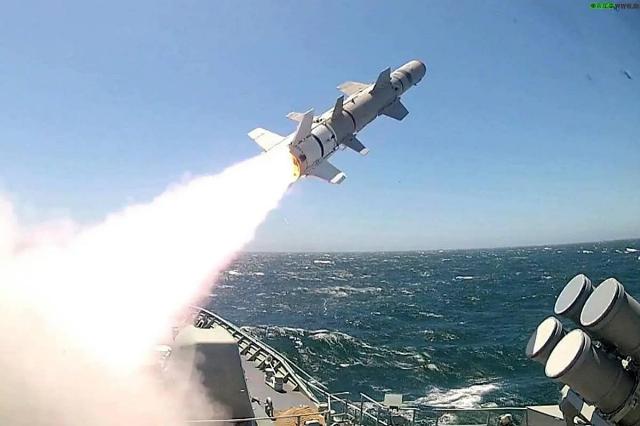We continue the topic of naval fire support. Having considered artillery ammunition in the first part , let's move on to the systems called the "long arm" of the modern Navy.
Long-range fire support
Deep strike and anti-ship missile (anti-ship) complexes represent the long arm of the current generation of the Navy for both fixed and moving high-value targets, where the ship component is not supported by naval aviation with an aircraft carrier capable of also carrying new generation air and surface systems such as SPEAR 3.
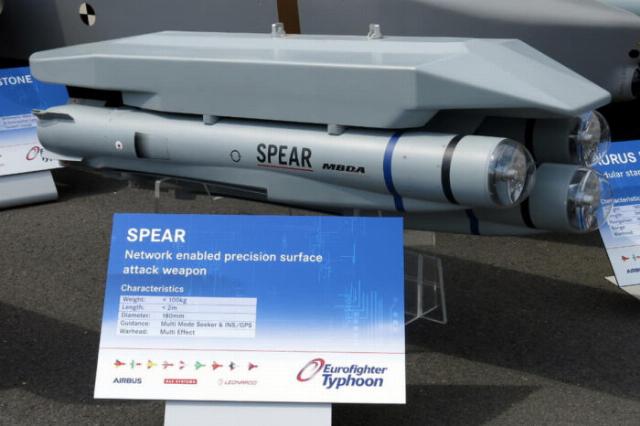
SPEAR 3 air-based RCC
A number of older-generation Western RCC complexes, such as HARPOON, EXOCET, OTOMAT/TESEO and RBS 15, have been upgraded during their life cycle using a GPS navigation kit to provide the ability to attack ground-based stationary targets, as well as more powerful fuel tanks and an efficient propulsion system to increase their range.
Although the scale and procurement are limited, an example of specific capabilities for attacking ground targets is the British surface-to-surface guided weapons program I–SSGW (Interim–Surface–to-SurfaceGuidedWeapon). It is planned that it will provide a temporary replacement for the Harpoon missile defense system for the period until the arrival of a new joint French-British system (FutureCruise/Anti–ShipWeapon, FC/ASW), which, according to the Ministry of Defense (MOD) of the United Kingdom, will enter service with Type 26 frigates from 2028.
Among the potential candidates are the latest Western RCC, including NSM (NavalStrikeMissile), RBS15 GUNGNIR Mk4, GABRIEL V/SEA SERPENT and long–range RCC LRASM (LockheedMartinLongRangeAnti–ShipMissile).
In July 2020, the Norwegian and German supply agencies signed a contract with Kongsberg Defense & Aerospace to replenish and update stocks of naval strike missiles (NSM) for the Norwegian Defense Ministry. With the purchase of the same missiles, the German Navy becomes the sixth customer to choose NSM, in addition to Norway, Malaysia, Poland, Romania and the United States.
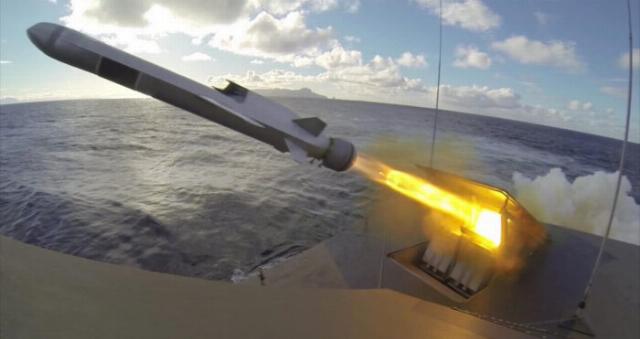
Naval Strike RCC NSM
An unobtrusive combined rocket capable of operating in both deep waters and coastal environments. Unlike most competitors, it is equipped with an advanced passive guidance package that combines GPS navigation with a laser altimeter and a dual-band imager with autonomous target recognition and a selectable guidance point. According to the German Ministry of Defense, Germany and Norway are planning to jointly develop a promising version of the NSM.
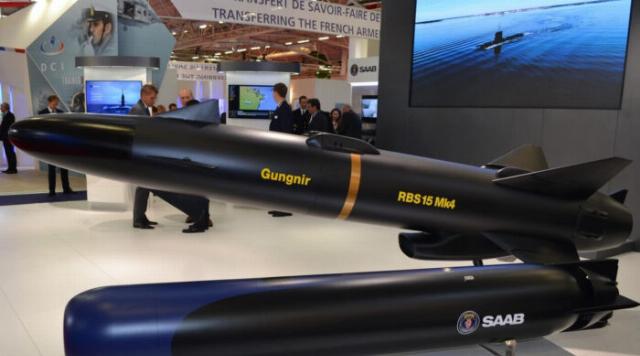
RBS15 Mk4 RCC
The RBS15 Mk4 is a last—generation RCC from the Swedish Saab, which in 2017 received a contract from the Ministry of Defense of the country for the development and supply of multi-purpose GRIPEN E fighters and VISBY-type corvettes. It is distinguished by a lighter composite airframe. The redesigned architecture of the existing Mk3 version will be equipped with an advanced navigation and guidance system capable of operating both over sea and over land, and a radio frequency homing head (homing) with improved processing capabilities and all-weather capabilities. The current version of the Mk 3 is under delivery or in service with the Swedish, German, Polish and Algerian Navies.
In April 2020, Israel Aerospace Industries (IAI) announced a joint proposal with Thales UK for the SEA SERPENT rocket for the British I-SSGW program. The Sea Serpent missile defense system, information about which is limited, is based on the latest version of the GABRIEL V, also known as the advanced naval strike missile (ANAM, AdvancedNavalAttackMissile), which is in service with the Israeli Navy and was purchased by the Finnish Ministry of Defense.
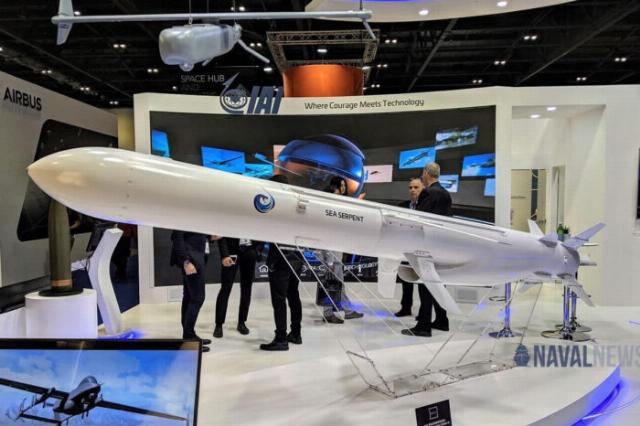
Israeli PKR SEA SERPENT
The American Lockheed Martin has developed and tested a ship-based version of its AGM-158C LRASM , which was selected by the US Department of Defense for offensive anti-ship air-based weapons (a ir-launchedOffensiveAnti-SurfaceWeapon, OASuW) as part of the Increment 1 program to equip F/A-18 E/F fighters and B-1 bombers of the US Air Force. Launched from MK41 vertical launchers (VPU) and deck-mounted angular launchers, it is armed with a 453-kg penetrator and a high-explosive warhead). LRASM also uses a weapon data transmission channel, GPS with anti-interference protection and a multi-mode passive homing kit with autonomous target recognition.
The European MBDA is working on the Teseo Mk2/E weapon system, for which the Italian Ministry of Defense signed a contract for development, qualification and industrial production in November 2020. MBDA Italia has developed a completely new long-range missile weapon system for the Italian Navy. The focus is on a transonic glider with a length of less than 5 m and a weight of 700 kg, as well as an upper stage and a single-shot container for shipboard operations with a slightly reduced radar cross section and a power unit providing an effective firing range of more than 350 km above sea level.
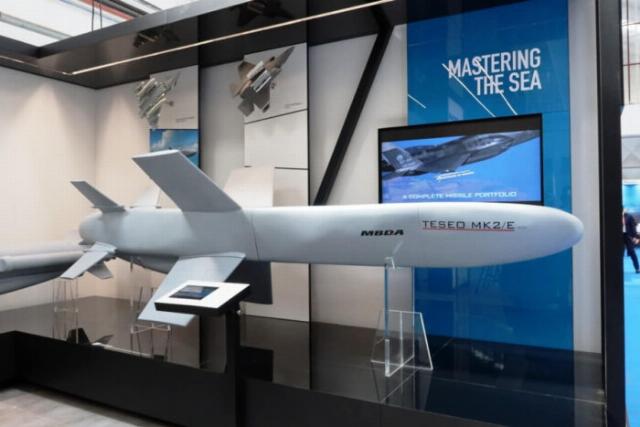
TESEO Mk2/E anti-ship complex
In addition to the state-of-the-art scalable warhead and advanced 4D mission planning systems, along with a fully autonomous integrated INS/GPS complex supported by an adaptive radar altimeter and a two-way satellite data link, the TESEO Mk2/E will be equipped with a new coherent radio frequency GPS and a semi-active laser (SAL) channel for high-precision interaction with third-party support. The contract also includes an ongoing feasibility study for the implementation of a next-generation alternative GPS based on an active electronically scanned array.
The TOMAHAWK long-range cruise missile from Raytheon is subject to a re-certification program to ensure a 30-year service life in support of US and UK stocks. The first batch arrived in March 2020. Modernization measures will allow the system to work with greater impunity in an environment of interference or denial of access (A2/AD). A new joint warhead system with multiple effects, combining new penetration with current explosion and fragmentation capabilities (JointMultipleEffectsWarheadSystem), as well as the introduction of a new multi-mode radio frequency GOS (MST, MaritimeStrike TOMAHAWK) for anti-surface operations on an unknown number of missiles. The communication upgrade, based on an advanced radio system (ISBS, Integrated Single Box Solution) with two new satellite antennas (covering UHF and other range), allows rockets to be launched using a precision alignment and navigation solution using TERCOM/DSMAC/vertical update point in the GPS receiver.
The RCC was first launched in October 2020 from a Suffren-class nuclear attack submarine to provide the French Navy with the possibility of a deep underwater strike using a European-made cruise missile (KR). In addition to equipping surface platforms, MdCN (MissiledeCroisièreNaval) uses a common guidance system from the air-based "Scalp" (SCALP-EG/StormShadow). The latter combines INS, GPS and terrain profile mapping with an infrared homing system with the ability to automatically recognize targets to achieve metric accuracy at the final stage.
In early September 2020, the US Navy revealed a video recording of live firing of the Raytheon SM-6 (RIM-174) weapon system with anti-aircraft/anti-ship capabilities with a modular PU launched on an experimental unmanned surface vessel (USV) of the Ghost Fleet Overlord program. This is the last known SM-6 combat shooting, successfully conducted in April 2020 from an ARLEIGH BURKE-class destroyer against a small unmanned boat with a complex chain of destruction using passive sensors.
The SM-6 is an active extended-range missile designed for network operations using third-party targeting. The missile can be used in anti-aircraft, naval and anti-ship defense, and has also been selected by the US Army to meet its medium-range ground capability as part of the larger Long-Range Precision Fire Initiative (Long-RangePrecisionFires).
To be continued…
Based on the materials of the journalEuropeanSecurity & Defense
